
Review: PreSonus StudioLive 16.0.2
A full service digital mixer for modest jobs.
Review:/ Graeme Hague
Smaller digital consoles are becoming commonplace, but there is a lingering perception that digital mixers are for ‘serious’ gigs and aren’t the kind of workhorse console you’d reach for first, particularly if the channel count is perhaps a single lectern microphone and a laptop playback. Simple stuff, in other words.
The PreSonus 16.0.2 StudioLive mixer is narrowing the boundaries between what is deemed worth a digital console and the, “what the hell, it’s only one microphone” basic setup we often encounter. The StudioLive is small, relatively easy to operate and cost-efficient, and still offers many of the advantages of an expensive digital mixer. So what’s the hold-up? Why wouldn’t you be chucking all those cheap, analogue mixers in the bin?
The problem is still all about that dreaded concept of things being ‘intuitive’ [What part of any piece of electronic gear is ‘intuitive’ to a Kalahari Bushman, an Amish farmer, or your own great-grandmother? – Ed.]. Plonk any reasonable technician, be they sound, AV or – heaven forbid – lighting-oriented behind a small, analogue mixer and they’ll quickly figure out how to fudge some noise out of the FOH. Do the same with any digital console and things will get a bit messy. The challenge for digital console designers in the smaller format market is to make things easy to achieve and obvious to the untrained (and not so untrained) eye. That is, to make digital console technology accessible to everyday users. Has PreSonus managed this?
BIG LITTLE DESK
Some brass tacks stuff first. The 16.0.2 StudioLive (not to be confused with the older/bigger 16.4.2 or 24.4.2 StudioLives ) has 12 mono XLR preamp inputs and the last four of these channels are capable of taking stereo signals thanks to pairs of TRS balanced inputs. The last two channels also have unbalanced RCA connectors, too – nice touch. However you choose to look at the configuration you’ll always max out at 16 channels, but they’re a genuine 16 rather than the input count being somehow inflated by digital or optical ports. There are four auxiliary channels, which is a pleasant surprise on a compact console and even better you don’t sacrifice any of these to feed either of the two FX channels – they have their own signal chain. If you want four foldback sends, you’ve got ‘em. The built-in DSP, which provides a high-pass filter, noise gate, compressor, limiter and three-band parametric EQ, can be applied to everything: every individual channel, or each of the aux buses and the master output. FX returns can be sent to the auxiliary channels (providing reverb in a foldback send for example) but not at separate levels – it’s either in all the aux sends or none – an issue which has caused some angst on the PreSonus forums. Some folks are never happy, but they may have a point on this occasion – among all the 16.0.2’s cleverness it’s an odd glitch. There is also a 31-band graphic equaliser that can be applied across the master outputs.
SLIGHTLY OBESE CHANNEL
The controls for all of these parameters come via a ‘fat channel’ that dominates the console’s real estate above the faders. Twelve rotary encoders handle most of the input values and double as sends levels for FX and auxiliary busses. It’s the standard approach to digital mixers with the one set of encoders all focused on the DSP parameters for the channel (or bus) you’ve selected. What’s different here is that PreSonus has opted to display values for each fat channel control using 16-bar vertical LED meters, rather than some kind of central, large LCD screen – there is a small LCD showing preset information, FX values and the like, but it’s certainly a ‘look close and squint’ LCD screen, not something you want to refer to in a hurry. The LED meters are another thing altogether. For example, the mid frequency range is shown spread between 260kHz and 3500kHz over 16 increments and the cut/gain level is plus or minus 15dB in 2dB steps (for those clever bastards doing the maths, don’t forget 0dB in the centre). These aren’t detent values, the EQ does sweep through the entire frequency spectrum (more on this later) and the gain is a constant variable as well. It’s only the LED bars that will eventually click over from one to the next. Likewise, all the compressor settings are shown alongside one of these 16-bar LED readouts, which is really only providing a rough idea of the value you’re choosing. Not good, when you’re fine-tuning a compressor.
In theory, and I suppose in practice, the system works fine. Especially when the meters were showing auxiliary or FX send levels for each channel, it worked great – and I’ve had my days of desperately trying to peer at an LCD screen in bright daylight, so any improvement on that gets a big thumbs-up. But I struggled to relate to these LED readouts when it came to the DSP tweaking. My eyeballs weren’t instantly getting information that made sense – if that makes sense. I had to look closely to decipher just what the pretty green LED bars meant… not happy.
The good news is that I had a means to completely ignore the LED displays anyway. Good news that makes me grumpy, though.
MORE INFO
PRICE
RRP: $1,699 (inc GST)
CONTACT
National Audio Systems:
1800 441400
[email protected]
www.nationalaudio.com.au

CLANDESTINE RECORDING CONSOLE
You see, the 16.0.2 doubles as a fully-fledged studio recording desk through a Firewire 400 port on the console. I’ll go into more detail below, but for now I’ll explain that the software driver for the 16.0.2 creates a virtual console on your PC and all the DSP fat channel controls are available in familiar DAW-type plug-in GUI displays. Brilliant! So an ideal setup would be, even for a small AV gig, to have a laptop connected to the 16.0.2 and you can tweak the fat channels on-screen with all the finesse you desire. It’s way better than using the rotary encoders or, more to the point, the LED bar displays. So why am I grumpy?
Have you tried to buy a laptop with a Firewire port lately? What has happened to Firewire ports? It’s the preferred connection for all kinds of high-end gear like video cameras, audio interfaces and such, yet laptop manufacturers have apparently decided that Firewire ports aren’t required. Unfortunately, as less than 1% of the vast laptop market, Firewire-using multimedia pros simply aren’t a big enough group for mass market manufactures to bother with in their high-volume, budget-priced offerings. Even Apple has deserted us. All right, back to the 16.0.2…
That Firewire connectivity allows the console to completely integrate with your DAW of choice, although PreSonus’s own software is plainly best. The StudioLive doesn’t become a control surface as such, but you can route all the DAW channels back into the console to be mixed down old-school style with all the mixer’s DSP goodies at your disposal. When you’re recording through the StudioLive you have the choice to make each channel post- or pre-DSP. You might be mixing a live concert and your DSP settings are hammering at a poor venue, but with the pre-DSP digital out selected, the recordings are raw and untouched.
BELLS WHISTLES FOGHORNS & SIRENS
A quick word about the software. You get supplied StudioOne Artist, which is the entry-level version of PreSonus’ own StudioOne DAW. S1 is an excellent program although users experienced with DAWs will soon notice the Artist version’s limitations and might consider upgrading. You also get Capture, which is so simple and basic – it’s excellent. Capture mimics a tape-based recording system, so you get to name your input channels and arm them for recording… and that’s it. It’s like having a couple of ADATs under the desk [sorry to those who have successfully blocked out the memory of ADATs for the last 10 years – Ed.]. The clever thing is that StudioOne will recognise and open Capture sessions, automatically dumping files into their own DAW channels where you can doodle with plug-ins and envelopes to your heart’s content.
From a live or production point of view the StudioLive’s greatest strength is the ability to save Scenes, Channels and FX presets. No big deal, you might argue – but remember we’re talking about a highly-spec’d digital console that’s about the size of a largish laptop. It’s ideal for regular AV rig setups where a memory recall will avoid 95% of re-tweaking that finicky lectern mike or instantly tame those nasty foldback wedges you always use. And you can be assured that the quality of the preamps, the DSP features and the actual build are all impressive. Very quickly you’ll build a library of favourite channel, desk and FX settings. Set-up times will plummet.
A NORMAL LEARNING CURVE
But face it, it’s a digital desk and so it’s not intuitive. How can it be? Sure, it conforms to many of the standard operating methods that other digital consoles use, but the 16.0.2 StudioLive is offering a wealth of mixing and processing – and studio recording – power in a compact and affordable package. Not surprisingly that kind of package also comes with a learning curve, and it doesn’t matter if your ‘every day’ desk is a Digico SD8 or a Yamaha M7CL, every digital console has its own workflows and you need to spend time familiarising yourself with them, before jumping into any deep end.
The 16.0.2 is a nice compromise of digital capability and keeping things affordable/uncomplicated – at the expense of the more esoteric functions the big digital consoles can do. It’s a small, useful and rugged digital console that will find a regular gig in a pro AV department or just sitting beside the project studio desk.
I’m guessing that’s exactly what PreSonus set out to achieve.

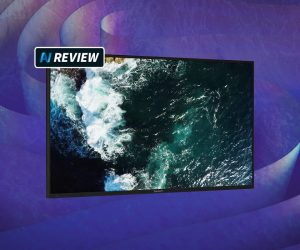
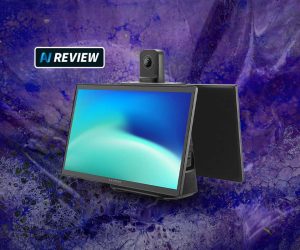




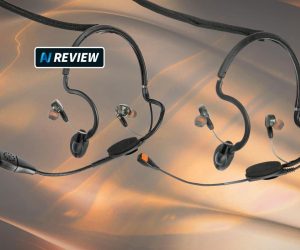
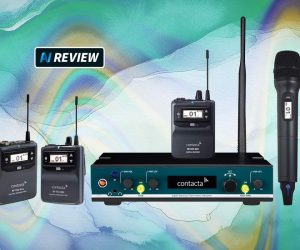


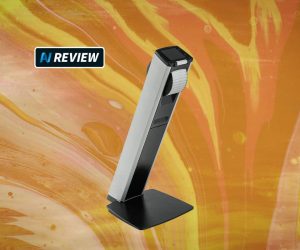



RESPONSES